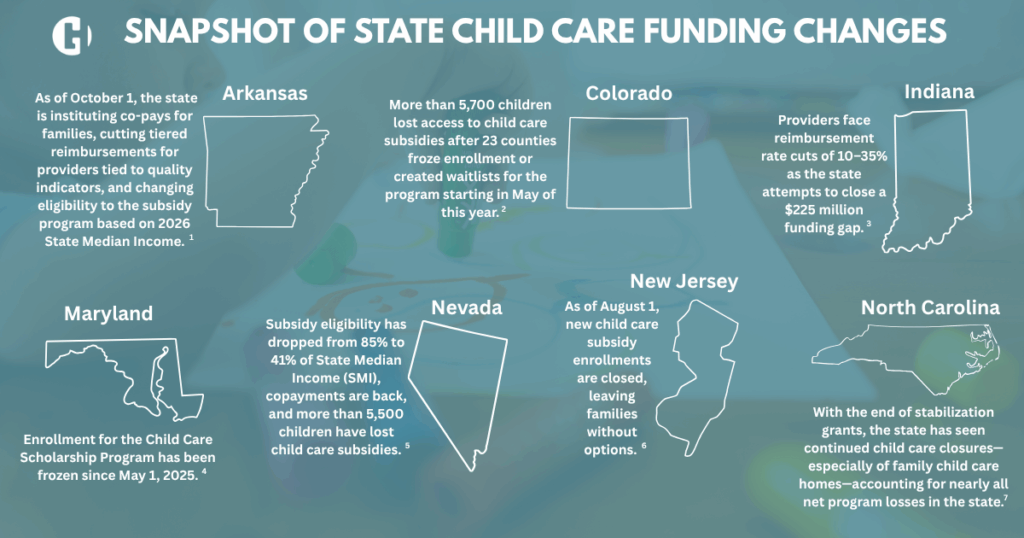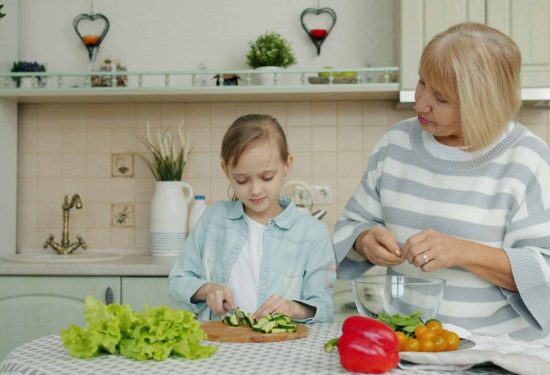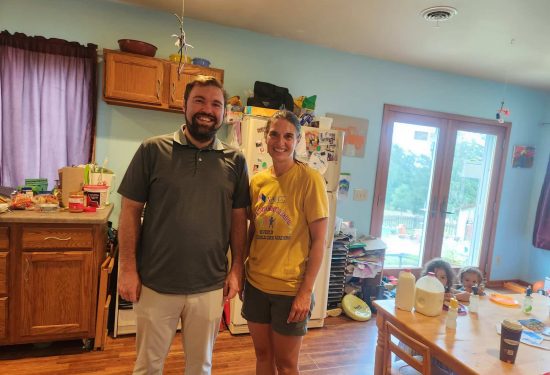For years, the Child Care Development Block Grant (CCDBG) has been a lifeline, helping families afford child care and keeping providers’ doors open; while the program only serves 14% of eligible families, it’s an important federal investment that defrays the true cost of child care which many families cannot afford. During the pandemic, additional federal investments via the Coronavirus Aid, Relief, and Economic Security Act (CARES Act) and American Rescue Plan Act (ARPA) came alongside increases to CCDBG funding to bolster the child care industry. But now, with pandemic relief dollars expiring and federal funding proposals for CCDBG remaining flat, the federal sources that once boosted pay for child care workers and expanded family eligibility for child care subsidy have dried up. As a result, states are making do with less federal investment by rolling back those and other supportive policies—and families and providers across the country are feeling the impact.
This is yet another setback for the child care sector, especially for home-based providers who have long been struggling under financial strain (facing material hardship as a result of low wages). Many have relied on programs like SNAP and Medicaid to help make ends meet, but those programs also faced funding cuts this summer under H.R. 1, the federal tax and budget reconciliation bill.

Families Are Feeling the Pinch
Fewer families eligible: New subsidy rules in several states mean fewer families qualify for child care assistance. Many states had expanded eligibility during ARPA, but those gains are now being rolled back.
Longer waitlists: More states are freezing new subsidy applications altogether, leaving thousands of families waiting—sometimes for years—without access to subsidized care.
Higher costs: Families who do qualify are being asked to contribute more through co-payments, making child care less affordable. Some families face tough choices between paying for care out-of-pocket or sitting on waitlists.
Families left without options: In the face of reduced child care subsidy slots, states redirect some families to other early childhood programs like Head Start – which has also been flat funded (after being marked for elimination) in the Federal budget and faces other threats,
Families without care leave the workforce: Some families leave the workforce without child care subsidy to support child care costs.
Lost opportunities for children: For young children, these early years represent a brief but critical window of development—one that shapes their future learning and success. CCDBG plays a vital role in supporting families and ensuring children have access to high-quality early learning during this formative period. According to CLASP, stagnant federal funding means 24,000 fewer children will have access to care in 2026. If nothing changes, nearly 50,000 children could lose access within two years.
Home-based Child Care Providers Are Struggling to Stay Open
Lower reimbursement rates: Some states are cutting reimbursement for providers who serve children with subsidies, reducing revenue and making it harder to stay open.
Operating at a loss: Providers are struggling to cover rising costs of food, materials, and staffing while facing inconsistent enrollment due to frozen subsidy applications.
Closures of family child care: In many states, family child care homes—especially in rural communities, serving infants/toddlers, or offering non-traditional hours—are bearing the brunt of closures.
Reduced supply: When providers close, it creates ripple effects: fewer slots for families, less access in rural areas, and shrinking availability of infant-toddler care.
The impact is clear: fewer families have access to care, while more providers, home-based providers disproportionately in some states, are being forced to close.
Why It Matters
Child care isn’t just about kids—it’s about families, child care providers, communities, and the economy. Parents can’t work without reliable care. Providers can’t survive without fair funding. And children can’t thrive without access to quality early learning.
Without stronger federal investment, this cycle will continue: families will struggle to afford the cost of care and care providers will be forced to close.
Bottom line: Families and providers are doing their best, but they can’t carry this burden alone. It’s time for lawmakers to step up and make real investments in child care. Ongoing political gridlock over federal spending resulting in government shutdown and budget proposals that flat fund the Child Care Development Block Grant (CCDBG) halt essential resource flows that enable children to participate in child care, families to be in the workforce and home-based child care providers to keep their doors open. These cuts harm children, families, and communities nationwide. For the well-being of families and children, Congress needs to reach an agreement on the 2025 spending bill and enact legislation that increases funding for CCDBG in 2026.
State Child Care Funding Changes Additional Reading
- 1 For additional details about the changes happening in Arkansas, click here.
- 2 Colorado Sun Report: Thousands of vulnerable Colorado families can’t access child care after federal rule changes
- 3 Indiana Capital Chronical: Indiana slashing rates for child care providers
- 4 Maryland State Dept. of Education: What Providers Need to Know About the Child Care Scholarship Program Enrollment Freeze
- 5 Child Care Aware of America: Federal Relief Funding for Child Care is Over. Now What?
- 6 NJ Spotlight News: NJ cuts child care subsidies for new applicants
- 7 EdNC: Number of licensed child care homes continues to decline after end of stabilization grants




